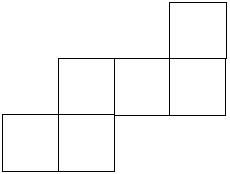Copyright © University of Cambridge. All rights reserved.
'A Puzzling Cube' printed from https://nrich.maths.org/
Show menu
Why do this problem?
This problem is a little more difficult than it looks. It requires children to visualise the adjoining faces of the cube and transfer them to a net of the cube.
Possible approach
You could start by showing the group the problem on an interactive whiteboard. Once you have discussed what needs to be done, children could work in pairs so that they are able to talk through their ideas with a partner. If tablets or computers are available, they could use the interactivity to keep track of their thinking. In addition, they could use a print-out of this sheet or draw the faces of the cube for themselves. Some children might request cube-shaped objects, such as large dice, to help them work on the task. Scissors, sticky tape and blutak would also be useful!
As you walk around the room, look out for different ways of approaching the task. Some children may want to construct the cube from individual squares, then 'undo' the construction to create the net. Others may prefer to visualise the arrangement of faces and transfer them straight on to the net. (Learners could use a different arrangement which can be folded into a cube, not necessarily just the conventional cross-shaped net given on the sheet.)
At the end of the lesson, it would be worth inviting some pairs to talk through their approach. Do all the resulting nets look the same? Why or why not? The class' nets and cubes would make a great display, along with a copy of the challenge itself.
Key questions
Why do you think these two faces are next to each other on the cube?
Look at these two faces. Which other one goes near them?
Possible extension
Some learners can be challenged to make the net of the octahedron from this sheet.
Possible support
Suggest making a net from this sheet and leaving it so it can be folded and unfolded. Then draw or paste on the faces one by one. If 'Polydron' squares are available the cube can be built up using the pieces from this sheet.


